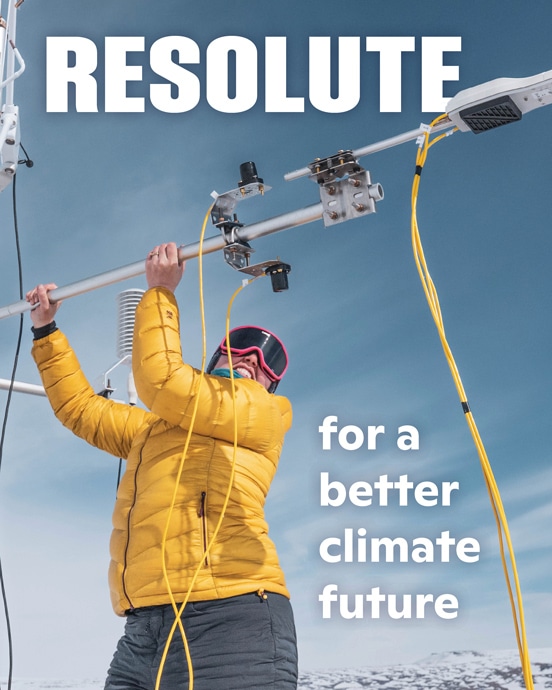Scientists explain why the record-shattering 2023 heat has them on edge. Warming may be worsening
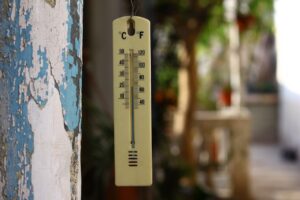
The latest calculations from several science agencies showing Earth obliterated global heat records last year may seem scary. But scientists worry that what’s behind those numbers could be even worse.
The Associated Press asked more than three dozen scientists in interviews and emails what the smashed records mean. Most said they fear acceleration of climate change that is already right at the edge of the 1.5 degrees Celsius (2.7 Fahrenheit) increase since pre-industrial times that nations had hoped to stay within.
“The heat over the last calendar year was a dramatic message from Mother Nature,” said University of Arizona climate scientist Katharine Jacobs. Scientists say warming air and water is making deadly and costly heat waves, floods, droughts, storms and wildfires more intense and more likely.
The way science is funded is hampering Earth System Models and may be skewing important climate predictions, according to a comment published in Nature Climate Change by Permafrost Pathways scientists at Woodwell Climate Research Center and an international team of modeling experts.
Emissions from thawing permafrost, frozen ground in the North that contains twice as much carbon as the atmosphere does and is thawing due to human-caused climate warming, are one of the largest uncertainties in future climate projections. But accurate representation of permafrost dynamics are missing from the major models that project future carbon emissions.
Read more on Permafrost Pathways.
Research Assistant Colleen Smith crouches low to the ground over a tray of crumbled soil. Using a boxy grey device that looks like a heavy-duty flashlight, she presses the flat glass end against the soil and fires a beam of infrared energy that bounces off the soil and back into the device’s sensor.
In moments, a readout pops up on a tablet screen, showing a spectrum of reflected light. With some analysis, Smith will have data on the chemical makeup of this patch of ground. With enough data points, she could estimate the soil properties of an entire field, pasture, ranch or farm, and how it might be changing over time.
Soil spectroscopy is a newer but fast-growing technique employed by scientists studying soil composition. At Woodwell Climate Research Center, a group led by Carbon Program Director Dr. Jonathan Sanderman has been spearheading its use to help improve the availability and affordability of reliable soil quality information, which is essential if we want to get serious about soil carbon sequestration as a natural climate solution.
Why soil spectroscopy?
“The heart of the technology is essentially getting the fingerprint of the soil, which tells us something about the overall chemical makeup of that sample,” says Dr. Sanderman.
The principles of soil spectroscopy are based in nuclear physics. Elements in the soil react in unique ways to the energy from the electromagnetic spectrum, reflecting some wavelengths and absorbing others. The reflected wavelengths give scientists clues to which minerals and elements are present and in what quantities.
That information can then be related to certain soil properties, like whether it’s suitable for certain crops, or whether it’s effectively sequestering carbon. The former is valuable information for producers like ranchers or farmers who need to make land management decisions. The latter is what climate researchers are most interested in. Soil spectroscopy represents an opportunity to marry the interests of both.
In a single scan, soil spectroscopy can estimate carbon, nitrogen, phosphorus, moisture, pH levels, and more. Traditional methods rely on multi-step chemical analyses to get you the same information— a time consuming and expensive process that could involve grinding, drying, weighing, mixing with reagents, and other steps to extract information on just one or two indicators of soil quality.
“With soil spectroscopy, you can get a pretty large suite of properties from one sixty second scan. A lab needs easily $2 million worth of instruments to be able to make all the same measurements using traditional methods,” says Dr. Sanderman. The most precise soil spectrometers can cost $100,000, but lower resolution and portable ones are substantially cheaper. “The speed and cost of spectroscopy are unmatched.”
Soil Spectroscopy for Global Good
These benefits make soil spectroscopy a method with big potential, but according to Dr. Sanderman there is still work to be done in refining the methodology to get universally accurate data. Alongside collaborators from the University of Florida and OpenGeoHub, he started the Soil Spectroscopy for the Global Good project (SS4GG) to jumpstart that work.
The project focused on two main efforts. The first was an extensive inter-laboratory comparison to understand how much the accuracy of scans varies between different instruments. Twenty laboratories across the globe participated, scanning identical samples which were then compared to the output from a lab widely regarded as the gold-standard in accuracy. The results were published in Geoderma late last year.
“We demonstrated that there is lab-to-lab variability, but also that there are procedures we can use to correct for differences between laboratories and get better integration of data,” says Postdoctoral Researcher, Dr. José Safanelli, who coordinated the study.
The second goal was to pool data from different labs into one accessible and open-source resource that also provides tools to analyze the data. The Open Soil Spectral Library (OSSL) now hosts over 100,000 soil spectra from across the globe that scientists can incorporate into their research and offers an engine for analysis. The idea is that with more people using and contributing soil spectral data, the faster the technology and the information gained from it will advance.
“We hope that the OSSL will be a driver of the soil spectroscopy community, advancing the pace of scientific discovery, and promoting innovation,” says Dr. Safanelli.
Building a community of soil scientists
Throughout the project, SS4GG efforts remained dedicated to transparency.
“We were always available to answer questions. We shared best practices and gave advice on which instruments are better, which manufacturers are the best in the market, and which procedures to use to collect spectra,” says Dr. Safanelli.
According to Dr. Sanderman, that openness fostered trust and collaboration— in both contributing data to the OSSL and participating in the inter-laboratory study— strengthening the community of scientists using soil spectroscopy.
“As we built momentum, more groups began to contribute,” says Dr. Sanderman. “It’s been great to see people realizing the value of collaborative, open science. People are now taking advantage of the foundation we’ve built.”
The soil spectroscopy community convened this past year for several webinars and presentations, including the Agronomy, Crop, and Soil Science Society meeting, where Drs. Sanderman and Safanelli hosted a training workshop and symposium on spectroscopy, as well as a two-day immersive workshop on the future of the field.
“We all benefit when this technology is more widely used,” says Smith.
Soil carbon as a climate solution
Speeding up the pace of soil science is key for developing climate solutions. Agricultural soils represent a large potential carbon sink; changes in farming and ranching practices can encourage sequestration of carbon in the soils. Soil carbon markets, and other payment for ecosystem services schemes could incentivise producers to make sustainable management decisions and soil spectroscopy could be a useful tool to track their contributions.
“The ultimate goal is to better monitor soils across landscapes to make food production more sustainable,” says Dr. Safanelli.
The handheld device that Smith was using is a test case for the speed and convenience of soil spectroscopy for analyzing soil carbon. If testing the quality of your soils can be as simple as a 60 second measurement with a low-cost piece of portable equipment, and the scan can get you additional information about soil fertility, then why not participate?
“We are trying to verify that we actually are sequestering carbon, and that requires lots and lots of measurements. So this is where we start moving into field-based spectroscopy,” says Dr. Sanderman. “If we can eliminate bringing the sample back to the lab altogether, we’re cutting our costs by another order of magnitude and could potentially scan several hundred points in a field in a day.”
Smith theorizes that cost could be further diffused through farming cooperatives or extension offices offering soil testing using inexpensive spectrometers. “Soil spectroscopy could be an easier way to get answers to big questions,” says Smith. “And that’s exciting.”
With the OSSL now up and running, the team is now focusing efforts on maintaining the growing network of interested soil researchers, pursuing new opportunities for collaboration as they arise.
“The network is getting stronger,” says Dr. Safanelli. “More people are coming and reaching out to us. That’s our biggest contribution: creating a network and sharing information across the community.”
Two new Polaris Project Alumni have been named John Schade Memorial Scholarship recipients. The fund, established in the memory of Dr. John Schade, who founded Polaris and was integral to its success, is dedicated to supporting the higher education goals of students that reflect Dr. Schade’s values of mentorship, education, leadership, equity, and the advancement of Arctic science.
Mandala Pham
Mandala Pham studies geophysics and history at the University of Texas at Austin. As an undergraduate researcher, she has explored the caves of central Texas, studied marine geophysics in Corpus Christi Bay, and peered back in time to past climates through geology. Her experience in different lab groups spurred her interest in field work, driving her to pursue graduate opportunities to continue getting up close with geology.
During her Polaris experience, however, Pham’s research focused less on geology and more on ecology. Inspired by her father’s affinity for beautiful, rare, and sometimes poisonous mushrooms, Pham studied the response of Arctic mushroom species to wildfire, comparing biodiversity between burned and unburned areas of land.
As part of Polaris, Pham saw a glacier in person for the first time, which reinforced her commitment to dedicate her career to studying and fighting climate change.
“From childhood anxieties to professional aspirations, I’ve taken tackling climate change as my personal direction in life,” says Pham. “I want to be part of the solution rather than spending my time ruminating on the worst-case scenarios.”
She hopes to get her Ph.D. in geophysics, studying glaciology. After that she has aspirations for either full time research or a career in the National Parks Services. Pham is also interested in screenwriting, pig farming, and perhaps one day, becoming a lighthouse keeper.
Aaron MacDonald
Aaron MacDonald’s passion for ecology began during his childhood spent on long family camping trips. Through his studies at University of Toronto, MacDonald has gained experience in oceanography and fisheries science through the Woods Hole Partnership Education Program (PEP) and the National Oceanic and Atmospheric Administration (NOAA) Inclusive Fisheries Internship. His field experience bolstered his confidence to pursue a scientific career.
With Polaris, MacDonald studied the role of willow ptarmigan, a common Arctic ground bird, as drivers of ecosystem dynamics on the tundra. For his career, he hopes to pursue a graduate degree and get involved with mentorship programs like Polaris. MacDonald firmly believes everyone should have the opportunity to study science, and is grateful for the support he received that has allowed him to pursue this career.
“Everyone who wants to is capable of scientific research and everyone has a place in STEM,” says MacDonald. “I have questioned many times if there is a place for me in STEM, but with the support of those around me I am determined to make it.”
In his spare time, MacDonald enjoys running and video games with friends.
Both recipients will receive funding to continue their education and pursuit of science, mentorship, and equity, encouraging a new generation of Arctic scientists working to change the world.
1.5°C is a physical limit: Here’s why this target can’t be negotiated
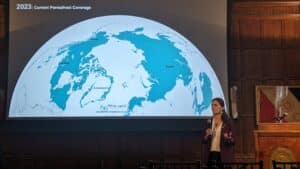
The 2023 El Nino year has taken global temperatures close to the 1.5°Celsius mark above pre-industrial levels and was the hottest year since records began. In response, the Global Collaboration Village (GCV), a World Economic Forum initiative, in partnership with Accenture and Microsoft, is convening leaders at the 2024 Annual Meeting to explore the global consequences.
The Village uses extended reality technology and immersion to bring the stark realities of the climate crisis to the forefront of global consciousness and explore appropriate response pathways.
Continue reading on the World Economic Forum’s website.
Valuing Indigenous knowledge in permafrost research
In the Canadian Arctic, two ambitious research initiatives try to strengthen climate data through community engagement.
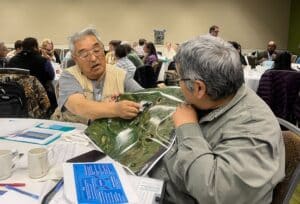
Over the last two years, Emma Street has taken trips to Canada’s North to places such as Tuktoyaktuk, a hamlet of less than a thousand people in the Northwest Territories, and Ulukhaktok, a small community on the west coast of Victoria Island. In these remote towns, Street, a Ph.D. student at the University of Victoria, has been meeting with Indigenous community members to learn about the Arctic’s changing landscape and how it is affecting their way of life.
“This is people’s lives and livelihoods and cultural connection,” said Street.
In March, she interviewed Irma and Ernie Francis, a Gwich’in couple who live in Inuvik, a town located about 120 miles north of the Arctic circle. Along the Mackenzie River, they saw houses sinking, the ground eroding beneath them. Community members shared how they’ve had to relocate due to the damage caused to their houses.
‘It’s a scary time’ as world shatters temperature record
And 2024 may bring more of the same.
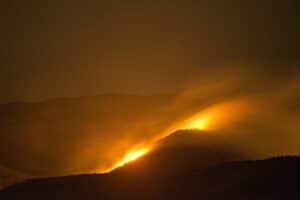
The Earth notched up its warmest year on record last year — but even that new peak is in danger of being surpassed in 2024.
The European Union’s Copernicus Climate Change Service confirmed a milestone Tuesday that scientists had long predicted: 2023’s average global temperature surpassed the previous peak set in 2016, and reached the highest mark since record-keeping began in 1880.
Earth shattered global heat record in ’23 and it’s flirting with warming limit, European agency says
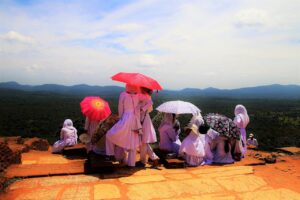
Earth last year shattered global annual heat records, flirted with the world’s agreed-upon warming threshold and showed more signs of a feverish planet, the European climate agency said Tuesday.
The European climate agency Copernicus said the year was 1.48 degrees Celsius (2.66 degrees Fahrenheit) above pre-industrial times. That’s barely below the 1.5 degrees Celsius limit that the world hoped to stay within in the 2015 Paris climate accord to avoid the most severe effects of warming.
Read more on Associated Press News.




